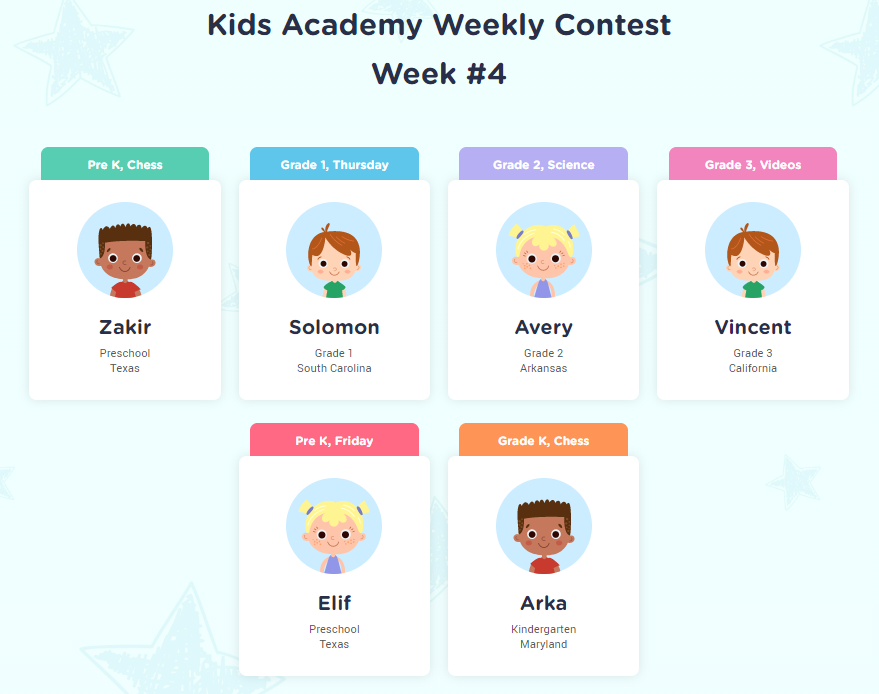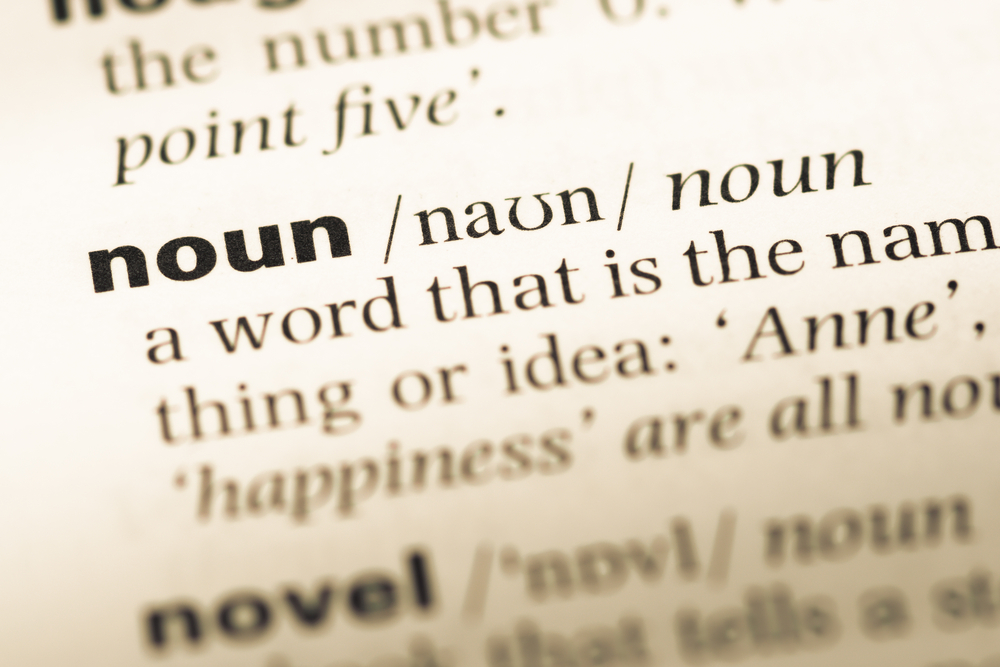Normal Reading Fiction worksheets activities for Ages 4-9
7 filtered results
-
From - To
Explore our engaging Normal Reading Fiction worksheets designed for children ages 4-9! These activities cultivate essential reading skills through enjoyable stories and thought-provoking questions. Each worksheet promotes comprehension, vocabulary development, and critical thinking while capturing the imagination of young readers. Perfect for home or classroom use, our resources are tailored to align with developmental milestones, ensuring that each child builds a solid foundation in reading. Enhance your child's love for literature with interactive exercises that are both educational and fun. Discover the joy of reading fiction with our thoughtfully curated worksheets today!
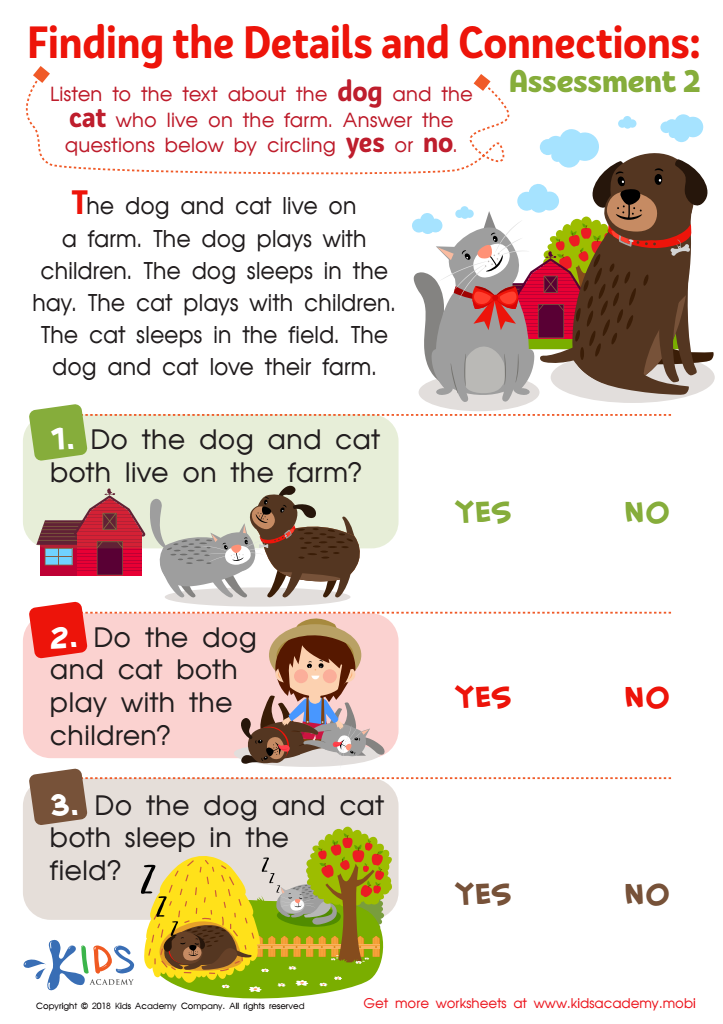

Finding the Details and Connections: Assessment 2 Worksheet
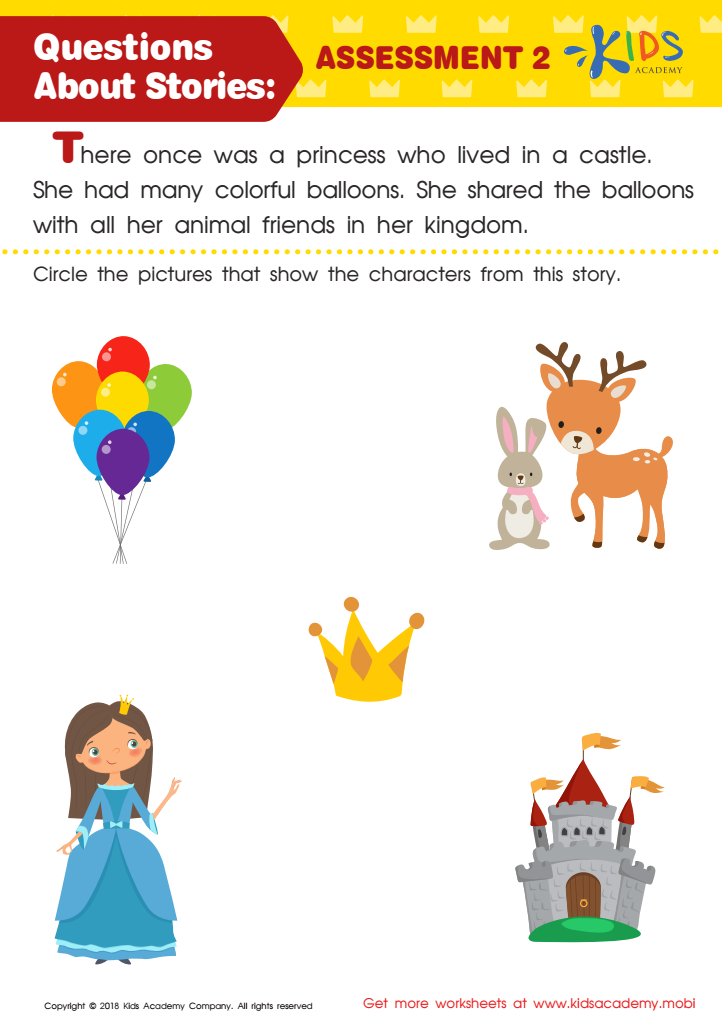

Questions About Stories: Assessment 2 Worksheet
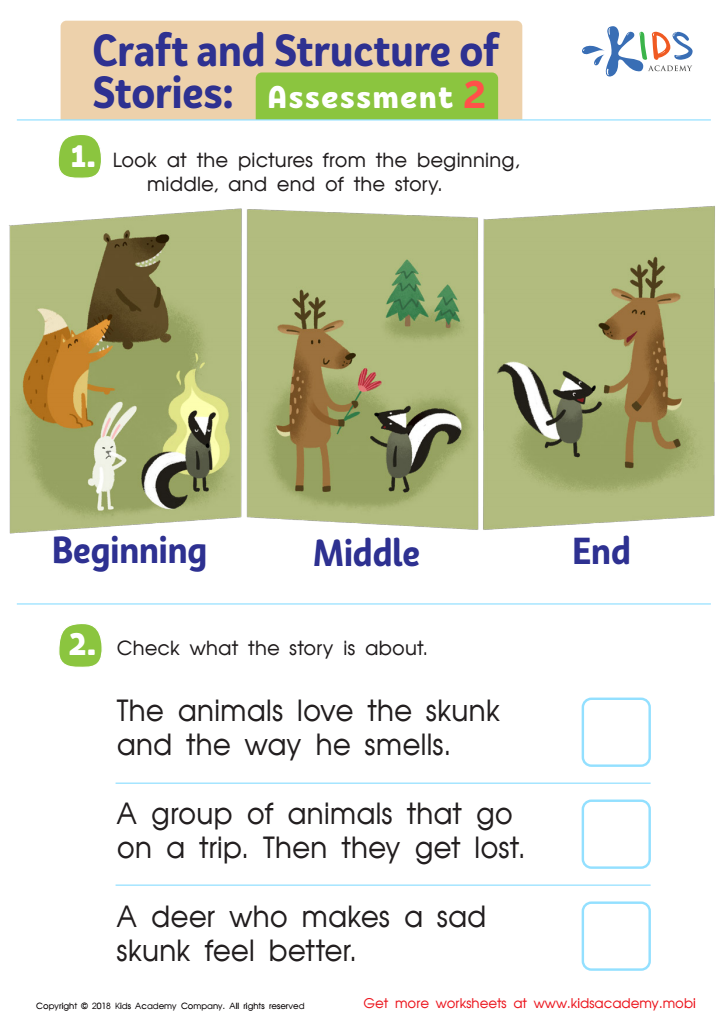

Craft and Structure of Stories: Assessment 2 Worksheet
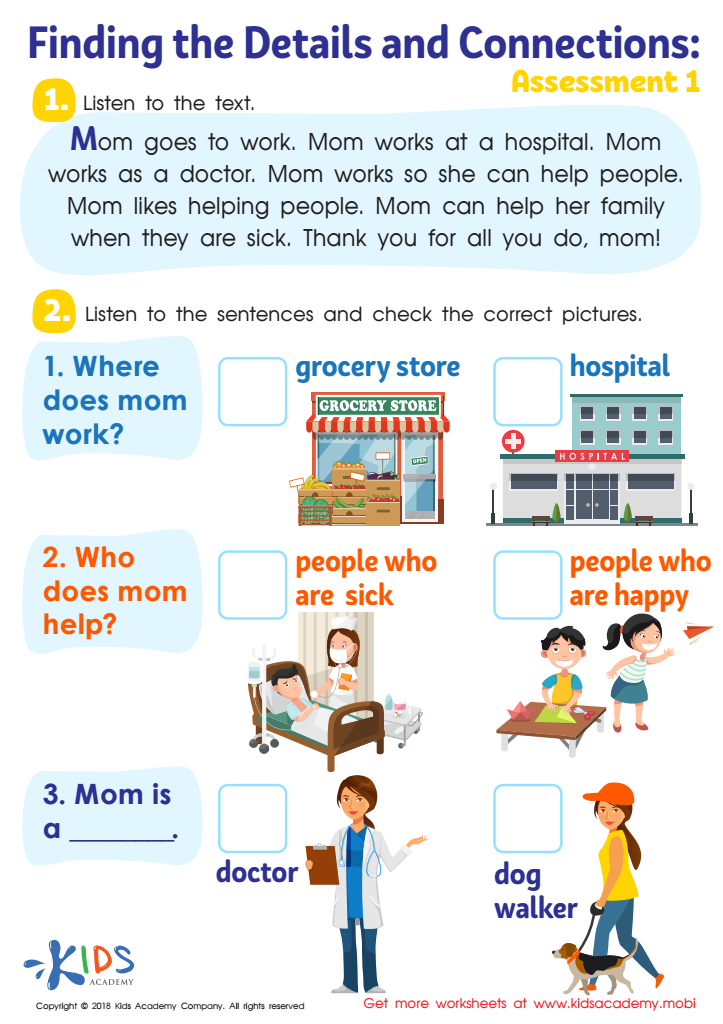

Finding the Details and Connections: Assessment 1 Worksheet
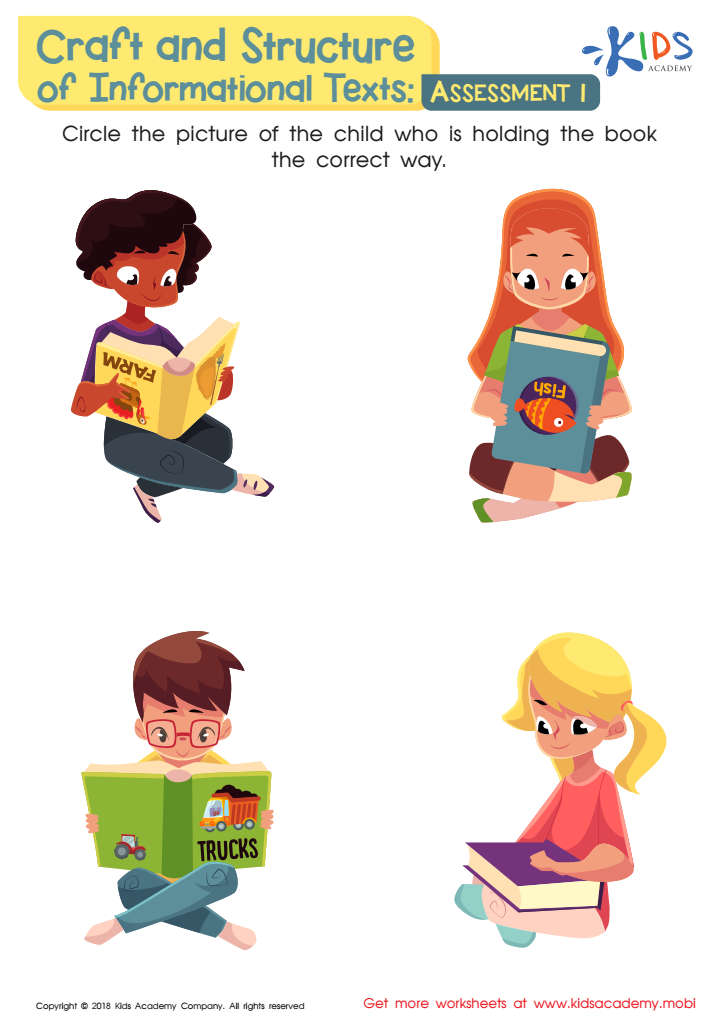

Craft and Structure of Informational Texts: Assessment 1 Worksheet
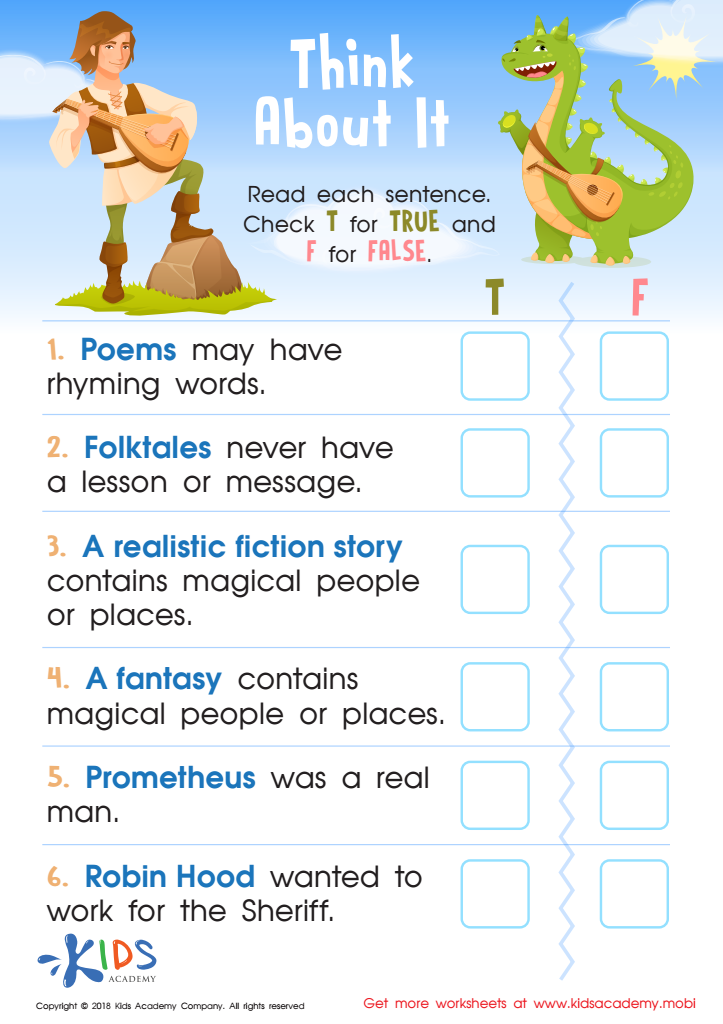

Think About It: Assessment Worksheet
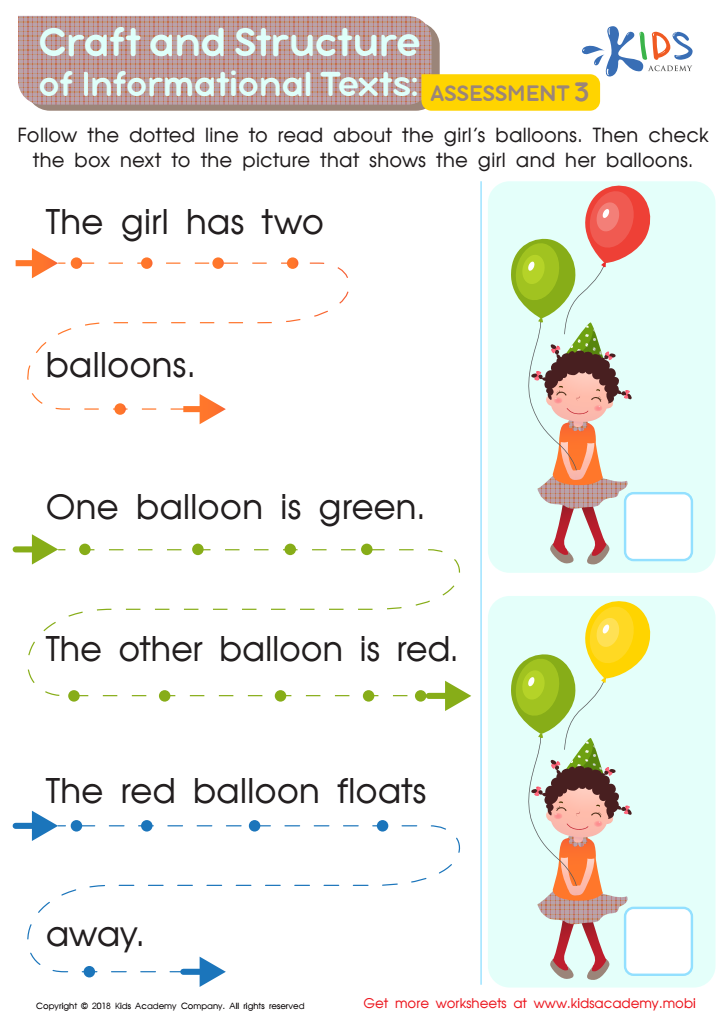

Craft and Structure of Informational Texts: Assessment 3 Worksheet
Engaging children ages 4-9 in normal reading fiction activities is essential for their developmental growth. During these formative years, children not only learn to read but also develop critical thinking and language skills. Reading fiction exposes them to diverse characters, settings, and narratives, which fosters empathy and understanding of different perspectives. This storytelling experience enhances their creativity and imagination, allowing them to explore worlds beyond their own.
For parents and teachers, these activities are vital for nurturing a love of reading, which can lead to improved academic performance over time. They promote language development, vocabulary expansion, and comprehension skills, laying a solid foundation for future learning. Engaging in reading activities also provides an opportunity for shared experiences between parents or caregivers and children, strengthening bonds while building a sense of security and confidence in young readers.
Moreover, normal reading fiction encourages interaction and discussion, stimulating intellectual curiosity and enabling children to express their thoughts and emotions. In a digital age where screens dominate, prioritizing reading experiences cultivates a focused, attentive mind, fostering lifelong learning habits. Therefore, investing time in reading fiction during these years is crucial for holistic childhood development.

 Assign to My Students
Assign to My Students






